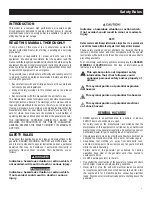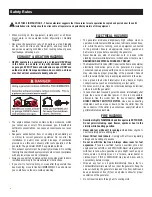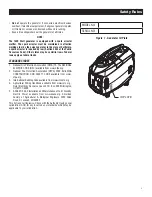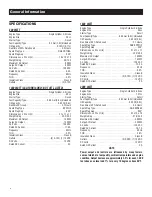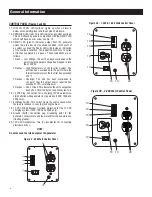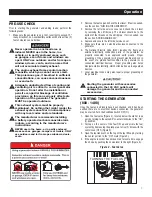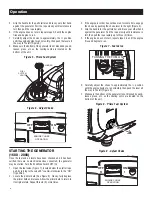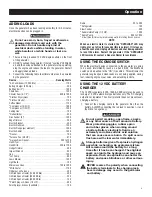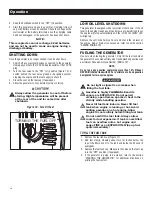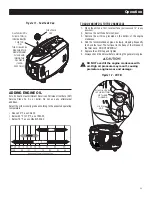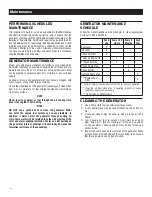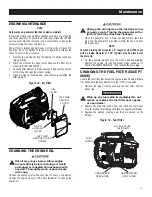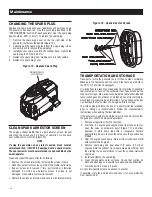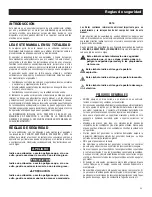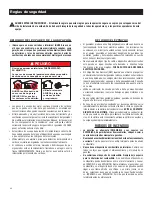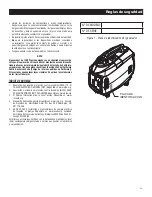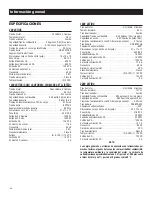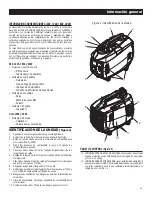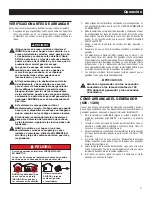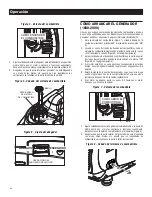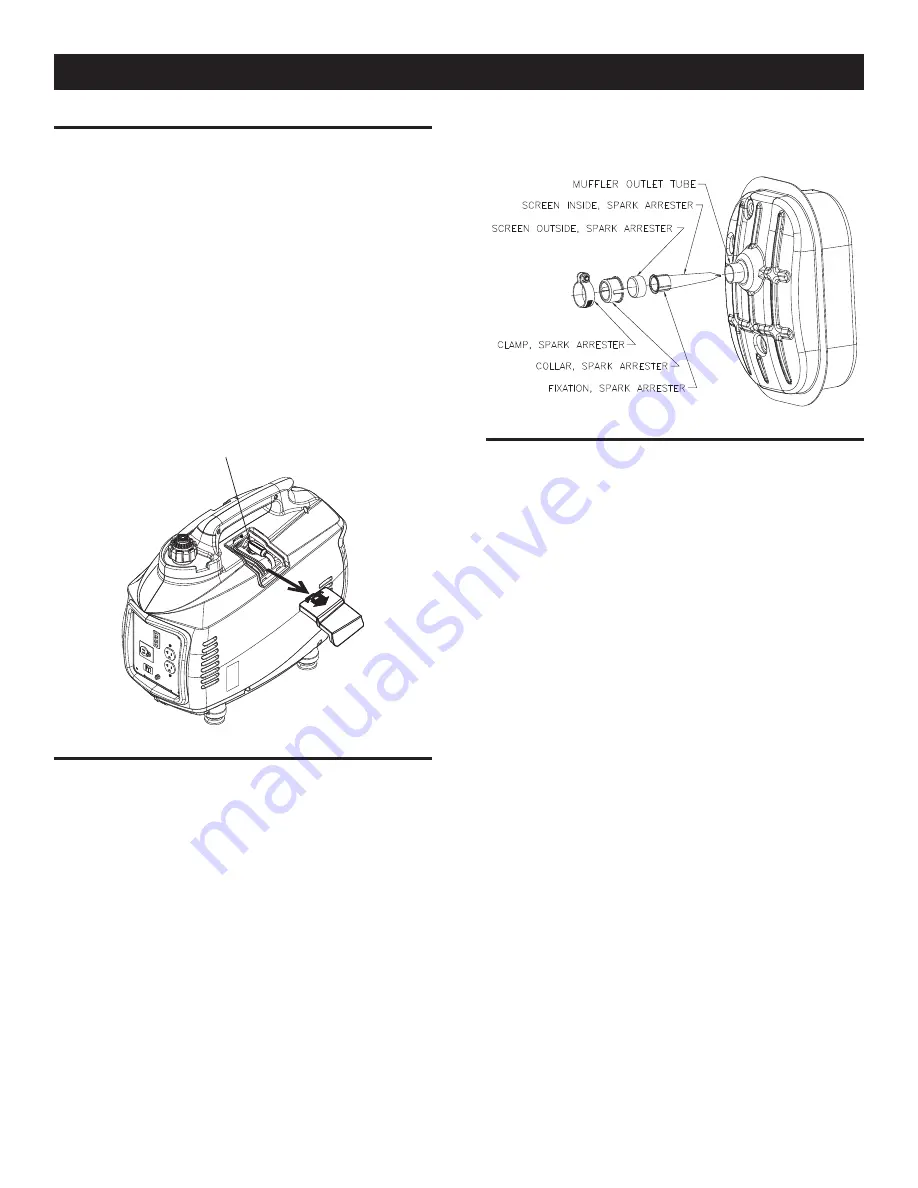
14
CHANGING THE SPARK PLUG
Replace the spark plug each year, regardless of how many hours
the generator has been run. Use the spark plug identified in the
"SPECIFICATIONS" section for each generator size. The spark plug
gap should be .030” (.76mm). To replace the spark plug:
1. Remove the spark plug cover on the top right side of the
generator, just below the handle (Figure 15).
2. Carefully pull the spark plug lead from the spark plug. Use a
socket wrench to remove the spark plug.
3. Install the new spark plug into the cylinder head. Tighten the
spark plug to 15 ft/lb, 20.4 Nm.
4. Replace the spark plug lead, making sure it is fully seated.
5. Replace the spark plug cover.
Figure 15 - Replace Spark Plug
SPARK PLUG
LOCATION
CLEAN SPARK ARRESTOR SCREEN
The engine exhaust muffler has a spark arrestor screen. Inspect
and clean the screen every 50 hours of operation or once each
year, whichever comes first (Figure 16).
NOTE:
If using the generator on any forest covered, brush covered
unimproved land, it MUST BE equipped with a spark arrestor.
The spark arrestor must be maintained in cood condition by the
owner/operator.
Clean and ispect the spark arrestor as follows:
• Remove the screen retainer by removing the retainer clamp.
• Slide the spark arrestor screen out from the muffler outlet tube.
• Inspect screen and replace if torn, perforated or otherwise
damaged. Do NOT use a defective screen. If screen is not
damaged, clean with a commercial solvent.
• Replace the screen and retainer and secure with retainer clamp.
Figure 16 - Spark Arrestor Screen
TRANSPORTATION AND STORAGE
Transport or store the generator only if it has cooled completely.
Make sure the fuel valve and the vent on the fuel cap are both in
the OFF (“O”) position (if equipped).
It is important to prevent gum deposits from forming in essential
fuel system parts such as the carburetor, fuel hose or tank during
long-term storage. Also, experience indicates that alcohol-blended
fuels (called gasohol, ethanol or methanol) can attract moisture,
which leads to separation and formation of acids; these acids gas
can damage the fuel system of an engine while in storage.
To avoid engine problems, the use of a commercial fuel stabilizer
prior to storage is recommended. Follow the manufacturer’s
instructions when adding the fuel stabilizer.
If the generator is going to be stored for more than six (6) months,
the generator should be prepared as follows:
1. Remove all gasoline from the fuel tank.
2. Start and run engine until engine stops from lack of fuel or
open the valve on carburetor bowl (Figure 17), and allow
gasoline to drain down tube into a receptacle. Discard
appropriately. Be sure to close the valve once the gasoline has
drained.
3. After the engine cools down, drain oil from crankcase. Refill
with recommended grade.
4. Remove spark plug and pour about 1/2 ounce (15 ml) of
engine oil into the cylinder. Cover spark plug hole with rag. Pull
the starting rope several times to coat the cylinder wall with
engine oil.
5. Install and tighten the spark plug.
6. Clean the generator outer surfaces. Check that cooling air
slots and openings on generator are open and unobstructed.
7. Store the unit in a clean, dry place.
Do not store gasoline from one season to another.
If possible, store the unit indoors and cover it to give protection
from dust and dirt.
Maintenance
Summary of Contents for G0060651
Page 19: ...17 Notes ...
Page 20: ...Manual Part No 0J9692 Revision B 02 25 13 ...
Page 39: ...37 Notas ...
Page 40: ...N º de parte del Manual 0J9692 Revisión B 02 25 13 ...
Page 59: ...57 Remarques ...
Page 60: ...N de pièce manuelle 0J9692 Révision B 25 02 13 ...


